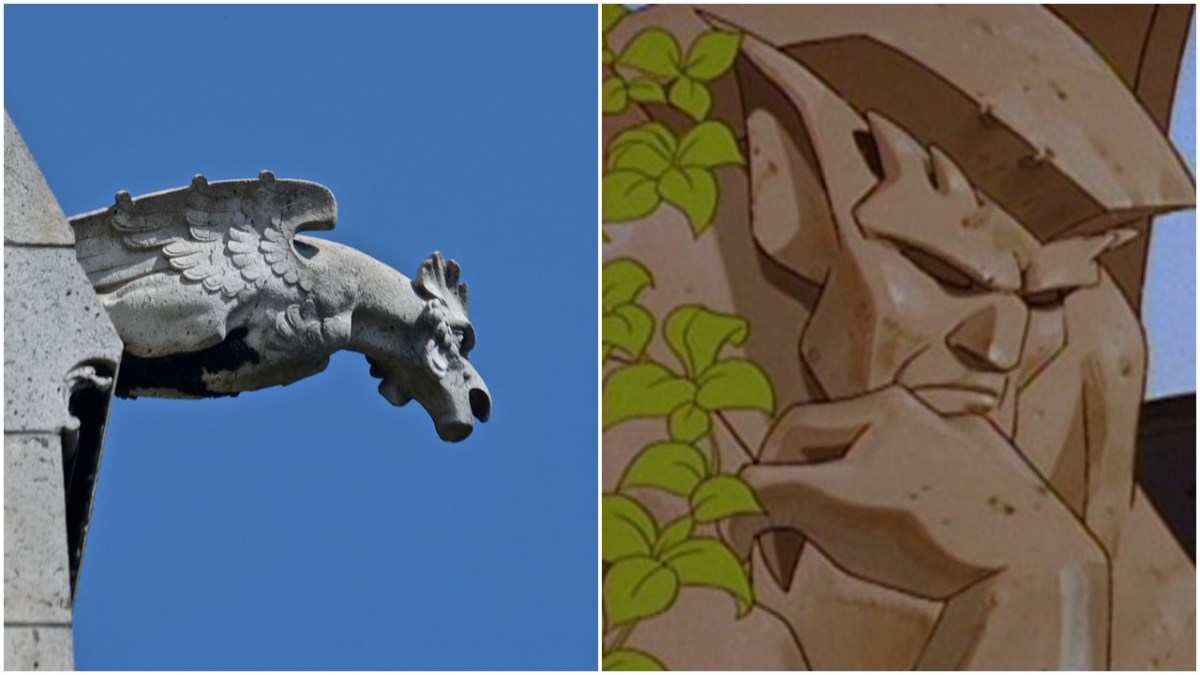Lately, I’ve been thinking a lot about gargoyles. I mean, I’m always thinking about gargoyles on some level, but my quarantine re-watch of Gargoyles on Disney+ and my other quarantine coping mechanism, falling down weird history rabbit holes, have recently combined and made me wonder just how gargoyles became a thing in the first place. Well, let me tell you.
First off, I have some very sad news for fans of Gargoyles the show: not only would there not have been castles in Scotland in 994 (castles, as we know them, weren’t introduced into the British Isles until the Norman conquest in 1066, and were instrumental in the success of said conquest) but any magical, protective monsters around wouldn’t have been called “gargoyles.”
“Gargoyles” as we know them—the ominous stone monsters—are a feature of Gothic architecture and didn’t become popular until around the 13th century, and they started out not as protectors for Scottish castles but as decorations for churches, beginning in France … for gutters. Gargoyles were initially made to go at the end of water spouts in Gothic churches (and yes, some castles) in the middle ages. They served a practical and artistic purpose.
The word “gargoyle” actually has the same root as the word “gargle,” the French gargouille, which means throat. The idea of a monster that spurts water isn’t random, it actually comes from a fascinating French legend about a dragon that lived in the Seine river near Rouen. In the legend, La Gargoille would swallow up ships and could breathe fire and water, and had a habit of flooding the town.
Sometime in the 7th century CE a priest named Romanus (aka Saint Romain) came to the town and made a deal with the locals that he would get rid of the dragon if they would convert to Christianity. They did and he made the sign of the cross and was able to defeat the beast. The dragon’s head couldn’t be destroyed, so they mounted it on the church they built in Saint Romanus’ name to warn off further dragons.
I’m sorry I said you weren’t very scary. pic.twitter.com/xuiTd9T8ob
— trouteyes (@trouteyes) May 26, 2020
Sidenote: there are lots of stories throughout history of men or heroes fighting dragons and serpents, and it’s almost always a symbolic tale of a new religion, usually male-centered, overcoming a local one, either pagan or more goddess/female-centered. You can see it in the tales of St. Patrick driving the snakes from Ireland who were really pagans, or in more ancient stories of mythic serpents like Zeus and Typhon. The story of Romanus and La Gargouille is explicitly about the conversion of pagans, so it fits this pattern.
The relation of gargoyles to paganism is quite fitting. While classic gargoyles are a product of the middle ages, the practice of decorating drain spouts with animals, and creatures like gargoyles goes way back, even to Ancient Egypt and other pagan/non-christian places. So slapping them on churches was useful in other ways beyond functional and aesthetic. They were tools for conversion. They became popular in a time when people were illiterate and the Church wanted to scare people into worship, but also incorporated some pagan elements.
By pagan elements, I mainly mean dragons, but gargoyles in the middle ages could be many things, from human faces to animal hybrids called “chimeras” to other “grotesques.” But the non-waterspout gargoyles, the kind we often think of when it comes to the word, are actually more recent. Many of the most famous gargoyles of Notre Dame cathedral in Paris were added in the 19th century as part of a renovation. By this time, gargoyles were mostly pure decoration and barely gargled at all.
And yes, to bring in another Disney connection, that does mean Quasimodo’s gargoyle friends in The Hunchback of Notre Dame weren’t even added to the church at the time the story is set, further confirming that the singing gargoyles are the worst part of that movie.
Like so much in pop culture and art history, gargoyles are both older and newer than they seem. They aren’t ancient beasts from the dark ages … but they also sort of are. They’re connected to ancient dragons and pagan symbolism, gothic art and romantic revivals, Disney cartoons, and church propaganda. They may not come to life, but their story brings light to an age of darkness.
(image: Wikimedia commons/Disney)
Want more stories like this? Become a subscriber and support the site!
—The Mary Sue has a strict comment policy that forbids, but is not limited to, personal insults toward anyone, hate speech, and trolling.—









